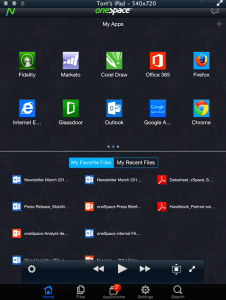For some time now, critics have suggested that OpenStack may offer lower ROI but fail to deliver on agility and uptime compared to AWS and similar services. We asked Sam Charrington, a cloud computing analyst and founder of St. Louis-based CloudPulse Strategies (cloudpul.se), for his thoughts on OpenStack and where it is going.
Why bother with OpenStack?
It is all about achieving greater agility. It is great to address such questions as:
- What could we do as a business if it took us minutes to provision resources and not weeks?
- Or if we could cut the time developers waste on chasing down resources and focus that on more creative activity?
How can you calculate ROI on an OpenStack implementation more accurately?
Both private and public clouds should be looked at for transformation, including team, business and industry transformation. That is the true opportunity. Not everyone sees it as this, however. If you can dramatically shift the way business is done, deliver capabilities faster or things that you couldn’t do otherwise, it is a softer ROI than being able to replace a bunch of VMware licenses and replace them with OpenStack. So you can get too focused on ROI and just look at cost savings, but that could mean you are missing out on more innovation and limit your options for bigger wins down the road.
Who has the most turnkey OpenStack implementation to get started?
Historically that has been PistonCloud and more recently Mirantis and others have a hosted OpenStack implementations. PistonCloud has done a lot to simplify getting started but that may be less useful for larger enterprises. For example, PistonCloud was a single instance so it didn’t have redundant operations. The issue is that ease of use continues to get in the way of OpenStack adoption – it is harder to get started than many people would like, and as the platform grows with adding new projects, it is also not getting any easier. Having multiple choices for storage and networking makes it harder to install, but this also creates a lot of flexibility and power too.
Where is OpenStack weakest when compared to AWS or VMware?
They are very different beasts. OpenStack is more of a private cloud to date, but as more hosted implementations happen of OpenStack, they could be more comparable. The strength of an OpenStack-based public cloud is portability and in using their APIs in multiple places. There really are limited on-premises options with AWS, while with OpenStack you can run both on-premises and in the cloud. Also, the AWS API is supported by a lot of tools because of its market presence and it is a lot more mature. VMware hasn’t been successful of building their own powered public clouds and to make things more portable to date.
Where are you in terms of the debate on public vs. private clouds?
The typical enterprise is experimenting with both technologies. There is still a lot of confusion between virtualized environments and private clouds, and IT managers need to understand the degree of automation that is behind private clouds such as provisioning, scaling and management features.
If you aren’t an Internet-native corporation like Facebook or Google, is there still a role that OpenStack can play?
Yes, but it isn’t because of your question’s implication. I tend to think of OpenStack as a more commercially acceptable of what Google and Facebook are building for themselves. These companies have their own internal management platforms and they put a lot of time and effort into things that aren’t really applicable for most enterprises. OpenStack tries to help enterprises that can’t build these tools and try to replicate some of the elements in these platforms. We are starting to see enterprises look more carefully at continuous development, there is a lot of waterfall development still being done. More of them are trying to transition to devops, but it requires a culture change that is significant. The big benefit here is to enable a higher degree of agility, and that makes them useful for enterprises that want to do this.

